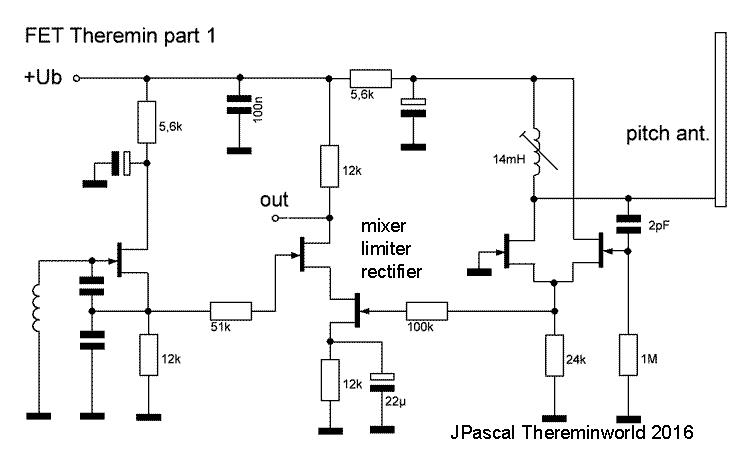Oh I see your are deep in materie, dewster! Thank you for your LTspice test and comments! I never got such a kind support. The asc file could be wrong, my LTS IV doesnt open it.
Thats what I mean with "my own" way: The electronic components are not yet fixed all, but the principle. Filtering the R.F. is possible by replacing the 12k resistor with transformer (like Rockmore theremin) or by following a RC combination. You see a so filtered shape in my video on oscilloscop. The colpitts oscillator is uncritical. 471 µH solid and 2.2 and 3 nF are used. Tunig only with the high inductance coil. This is a ferrit cup core coil (hope this is the correct expression). JFets are the BF245A type, which are not more in trade, better say not more produced. Similar transistors can be used.
Theremin development is like building and preparing a violin. If you want a stradivari you must invest a lot of time and experience. I am limited in both, so I take the know how primarely from the old technique. Shape form fourier analysis of historic demonstrations of RCA theremin, without vibrato and volume effects, are the basic material for me. A radical reduction of electronic components is required, I am convinced.
The mathematical simulation, the measures, pspice are done, and I will post the results step by step if there is interest and patience.
Playing a theremin ever begins with a tuning like violin. There is no need for stable batterie. Current is very low. I see the point, its critical for an electronic developer.
Best, Jan


